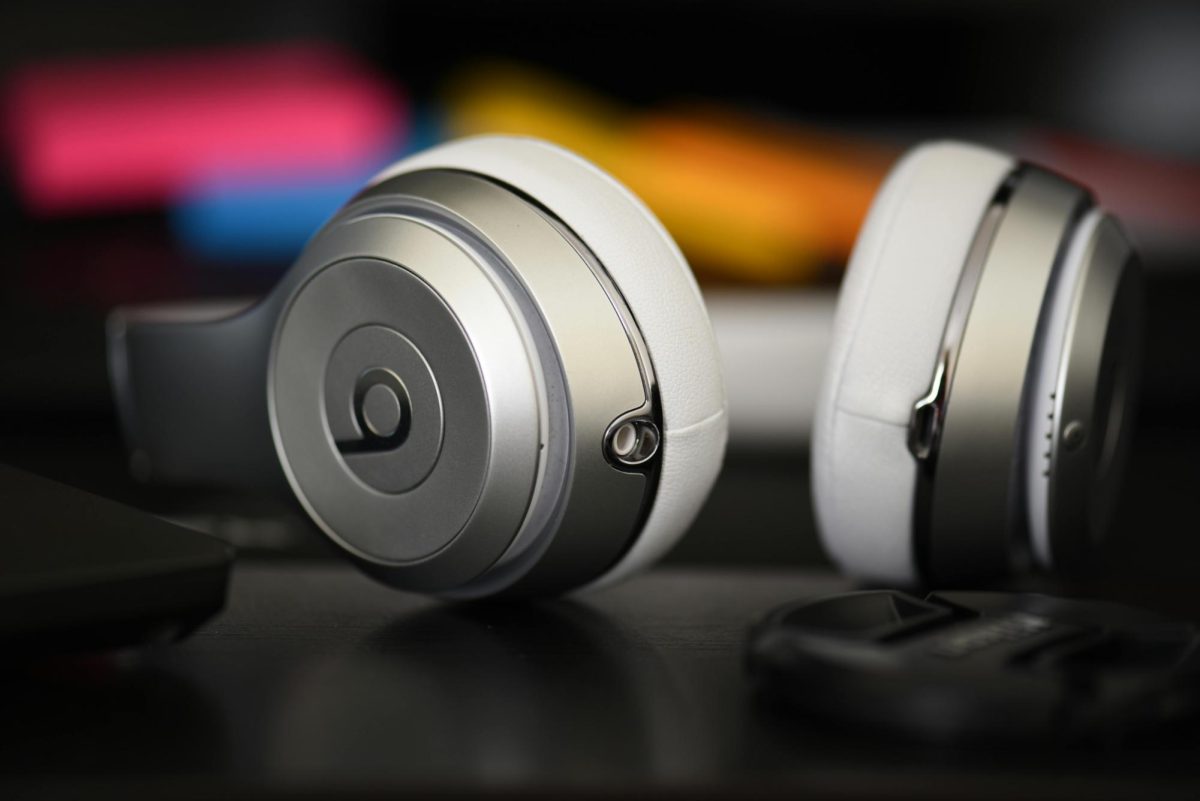In the whirlwind of today’s digital age, headphones are a teen’s best friend. They offer a private haven of music, podcasts and videos. However, the love for loud music through headphones is brewing up a storm.
The teen years, marked by exploration and learning, are now also becoming a time of inadvertent risk-taking when it comes to auditory health.
The magnitude of this issue is both broad and deep, with around one billion young people worldwide potentially at risk of hearing loss from their habits of listening to loud music through headphones, according to the BMJ Global Health Journal. The ubiquity of headphone use among teens, coupled with a preference for loud volumes, is a recipe for widespread hearing impairment.
“I honestly can’t see a world without my AirPods,” junior Anthony Sanchez said. “I use them daily, and I see my friends with them in all the time as well.”
According to The Mirror’s survey, 65 percent of students polled listen to music with their headphones at maximum volume.
Understanding the dynamics of sound and its impact on the ears is fundamental. Sound is measured in units called decibels. The higher the decibel level, the louder the sound.
Prolonged exposure to noises above 85 decibels can be harmful to hearing. To put this in perspective, music listened to at maximum volume using headphones often falls in the range of 85 to 120 decibels, a level that can cause significant hearing damage over time.
“After thinking about it, I’m pretty sure that I listen to my music at at least 75 percent volume,” sophomore Kaisher Babaran said. “Sometimes it’s loud enough where my friends will call my name and I won’t hear what they said. I’m used to listening to music at that level, and if I listen at a lower volume it just feels unnatural.”
A study revealed that adolescents exposed to high noise levels via headphones in noisy environments experienced a hearing loss prevalence of 22.6 percent, and those who used earphones for 80 minutes or more per day on average had a hearing loss prevalence of 22.3 percent. This is alarming given the sheer number of teens who use headphones daily, often at volumes that far exceed safe listening levels.
The ramifications of early-onset hearing loss are grave and far-reaching. Hearing loss in youth can set a domino effect into motion, leading to social isolation and depression, eventually escalating the risk of cognitive impairments such as dementia.
According to the National Library of Medicine, the auditory nerve, which carries sound signals to the brain, when constantly bombarded with loud noises, starts transmitting weaker signals. This, in turn, forces the brain to work harder to interpret the sound, leading to cognitive overload, a precursor to dementia.
Moreover, the popular culture of loud music and the stigma around hearing loss, often seen as an issue linked to old age, worsens the problem.
“It honestly scares me that just listening to music loudly can actually lead to dementia,” senior Bella Mokhtari said. “Loud music always changes my mood for the better, so to think that doing that can increase my chances of getting dementia is concerning. It’s been hard, but I’m trying to lower my music volume when I can. Even if it’s slow, I think I’m making progress.”
Teens, being at a pivotal point of cognitive and social development, are particularly vulnerable to the effects of hearing loss. It’s not merely about the ears; it’s about how the ears, the brain and social interactions are intertwined.
The spectrum of health issues associated with this habit stretches further, encompassing other lesser-known but impactful ailments.
Hyperacusis, defined as a heightened sensitivity to certain frequency ranges of sound, often finds its roots in prolonged exposure to loud music through headphones. This condition can transition into a chronic issue where even mild sounds become intolerable, creating a persistent discomfort in daily life.
Sleep disturbances are another concern associated with loud headphone usage. While many find solace in the soft tunes playing through their headphones as they drift off to sleep, the reality is that this habit can significantly impede sleep quality.
Nighttime noise, even at a decibel level as low as 40, can interfere with brain activity during sleep, leading to a restless night. Over time, these sleep disturbances can translate into a host of other issues including impaired cognitive function, mood swings and a general sense of lethargy.
“Sometimes I fall asleep with music playing on my computer, and I won’t wake up during the night to turn it off,” Sanchez said. “I wouldn’t be surprised if it adds to my grogginess in the morning. I’ve been using Spotify’s sleep timer feature, and it’s been effective as long as I remember to turn it on.”
The repercussions of these conditions are far-reaching. The daily routine of adolescents can be significantly affected, leading to decreased performance in school and other activities. The ripple effect of these health issues can cascade through various facets of a teenager’s life, subtly chipping away at their overall well-being.
Addressing these concerns requires a multi-pronged approach rooted in awareness, education and actionable solutions. Knowledge about the decibel levels and the duration of exposure that could potentially harm the ears is the first step towards a safer auditory experience.
The 60/60 rule, which suggests keeping the volume under 60 percent of the maximum and limiting headphone use to under 60 minutes a day, is a guideline backed by audiologists that aims to mitigate the risks associated with loud music.
Furthermore, shifting the cultural narrative around loud music and headphone usage is imperative. Educational campaigns in schools and communities can play a pivotal role in fostering a better understanding of the risks involved and promoting safer listening practices.
Additionally, leveraging technology to promote safe listening habits holds promise. Innovations such as volume-limiting features on devices and apps that monitor listening levels could serve as practical tools in the quest for better auditory health among teens.
“I used to listen to music on my AirPods loudly for a few hours a day,” Sanchez said. “A few months ago I saw this video on what the long term effects of listening to music really loudly are, and since then I’ve been trying to make a conscious effort to lower the volume, even though it’s a habit to listen to music loudly.”
Moreover, fostering an environment where safe listening habits are encouraged and where individuals are equipped with the knowledge and tools to protect their auditory health is crucial.
This comprehensive approach can significantly contribute to reducing the risks associated with loud headphone usage, allowing younger generations to protect their ears from potential damage. By instilling a culture of awareness and proactive measures, the road towards sound auditory health becomes more hopeful.
The abridged version of this article appeared in the Fall 2023 print edition. This is an uncut version.



